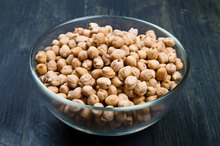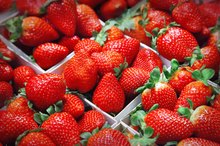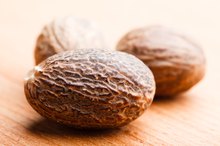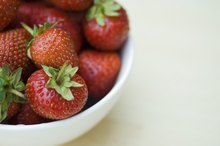What does fact checked mean?
At Healthfully, we strive to deliver objective content that is accurate and up-to-date. Our team periodically reviews articles in order to ensure content quality. The sources cited below consist of evidence from peer-reviewed journals, prominent medical organizations, academic associations, and government data.
The information contained on this site is for informational purposes only, and should not be used as a substitute for the advice of a professional health care provider. Please check with the appropriate physician regarding health questions and concerns. Although we strive to deliver accurate and up-to-date information, no guarantee to that effect is made.
Purine Levels in Nuts
Nuts can be a convenient and healthy snack option for those on the go, a rich source of protein and heart healthy fats, including omega-3 fatty acids. Naturally low in carbohydrates, nuts can be an alternative snack option for those with diabetes. They are also considered low in purines and can help to reduce overall uric acid accumulation 1. Low uric acid levels are associated with a decreased risk for inflammatory diseases such as arthritis and gout.
If you are experiencing serious medical symptoms, seek emergency treatment immediately.
Definition
Purines are naturally occurring substances that are found both in our bodies and in the foods we eat. Nearly every cell in the body contains purines. When cells break down, the purines within are broken down as well. Uric acid is a byproduct of purine breakdown. While uric acid is normally filtered out of the body by the kidneys, occasionally it can build up and form crystals, which can accumulate in joints throughout the body and cause swelling and pain otherwise known as gout 1.
- Purines are naturally occurring substances that are found both in our bodies and in the foods we eat.
- When cells break down, the purines within are broken down as well.
Low Purine Diet
Symptoms of Allergies to Chickpeas and Soy
Learn More
A low purine diet is often recommended for those who are at risk for or have a history of gout. On a low purine diet, foods to avoid include:
- organ meats
- anchovies
- fish
- shellfish
- game meats
- broth
- gravies
- yeast
- products made with yeast
- including beer
These foods all contain well over 150 mg of purines per serving. Foods that contain low amounts of purines, which are safe to eat daily, include
- eggs
- nuts
- low-fat dairy products
- fruits
- bread
- pasta
- rice
- coffee
- tea
- sugar
- oils
Low purine foods contain less than 50 mg of purines per serving.
Purines in Nuts
Nuts are naturally low in purines and can be eaten daily by those on a low purine diet. With the exception of peanuts, most nuts contain less than 40 mg of purines per cup; peanuts contain about 79. Brazil nuts contain only 23 mg purines per cup, followed closely by walnuts, which contain only 25. Almonds and hazelnuts both contain about 37 mg purines per cup.
- Nuts are naturally low in purines and can be eaten daily by those on a low purine diet.
- Almonds and hazelnuts both contain about 37 mg purines per cup.
Other Nutrition Facts
Gout and Shrimp
Learn More
While nuts are relatively low in purines, they are somewhat high in calories and fat and should be consumed in moderation. Depending on the type, nuts contains roughly 750 to 900 calories and 70 to 90 g fat per cup. This includes peanuts, walnuts, Brazil nuts, hazelnuts and almonds. Consuming just one cup of nuts each day meets over one third of your daily calorie needs, based on a 2,000-calorie diet.
- While nuts are relatively low in purines, they are somewhat high in calories and fat and should be consumed in moderation.
- Depending on the type, nuts contains roughly 750 to 900 calories and 70 to 90 g fat per cup.
Related Articles
References
- GoutPal: Foods High In Uric Acid
- Dial-a-Dietician Nutrition Information Society of B.C. ; Diet for Gout; October 2006
- National Institute of Arthritis and Musculoskeletal and Skin Diseases; Gout; May 2010
- USDA National Nutrient Database for Standard Reference
- The Merck Manual for Health Care Professionals. "Gout." Accessed March 25, 2016. http://www.merckmanuals.com/professional/musculoskeletal_and_connective_tissue_disorders/crystal-induced_arthritides/gout.html
- National Institute of Arthritis and Musculoskeletal and Skin Diseases. "Questions and Answers About Gout." Accessed March 25, 2016. http://www.niams.nih.gov/Health_Info/Gout
Writer Bio
Emily Creasy began writing professionally in 2010. As a registered and licensed dietitian her writing focuses on weight loss, disease-specific diets and diet-friendly cooking. She holds a Bachelor of Science in human nutrition, foods and exercise from Virginia Tech and a Master of Science in dietetics from James Madison University.









